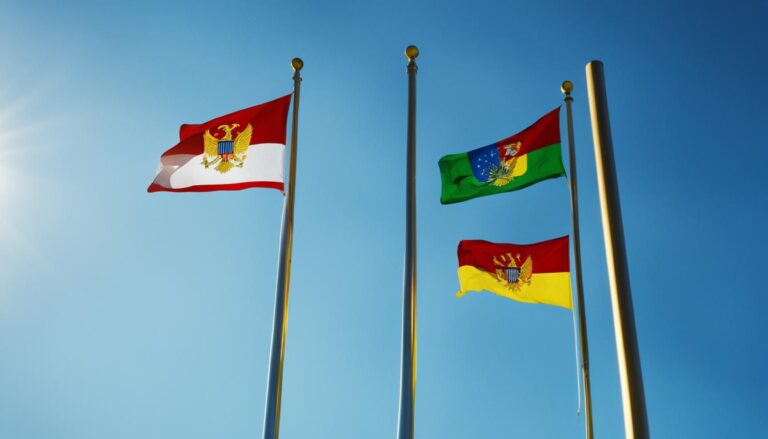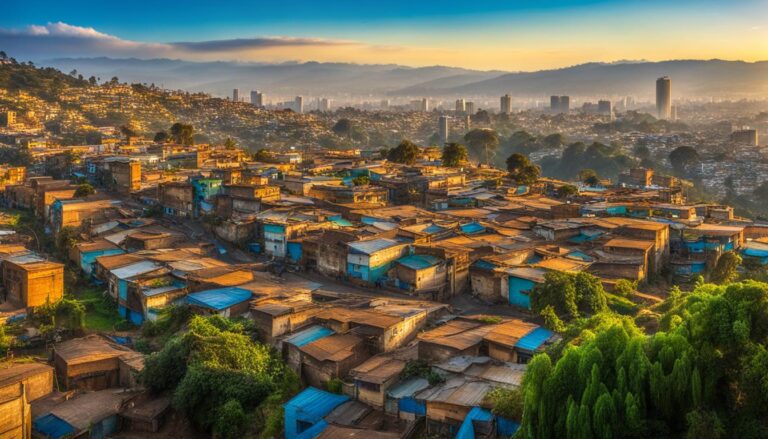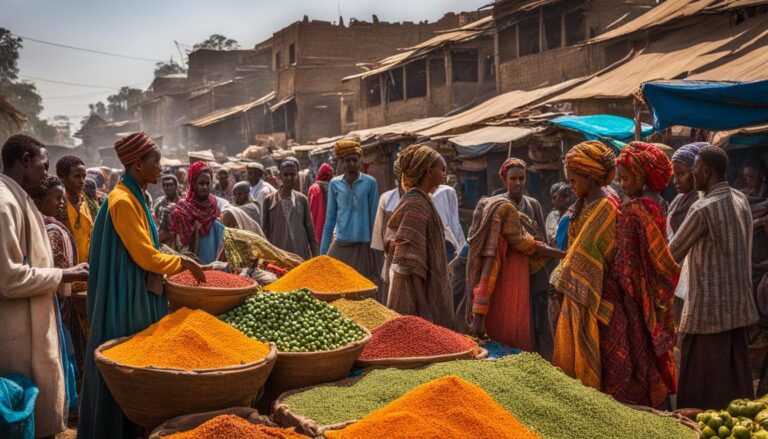What Is The Population Of Ethiopia?
The current population estimates in Ethiopia
Understanding the current population estimates in Ethiopia is essential for policymakers, researchers, and organizations working in the region. As of 2021, Ethiopia is one of the most populous countries in Africa, with a population exceeding 120 million people. The country’s population has been steadily increasing over the years, driven by various factors such as high fertility rates, improved healthcare, and declining mortality rates.
One of the key aspects influencing population growth in Ethiopia is the high fertility rate. The average woman in Ethiopia gives birth to around 4 to 5 children during her lifetime. This, coupled with advancements in healthcare that have led to a decline in infant and child mortality rates, has contributed significantly to the country’s population growth.
Moreover, Ethiopia’s population is distributed unevenly across different regions. The central and northern parts of the country are more densely populated compared to the sparsely populated southern and eastern regions. Addis Ababa, the capital city, is one of the most densely populated urban centers in the country.
Urbanization trends have also played a significant role in shaping Ethiopia’s population dynamics. As more people move from rural to urban areas in search of better opportunities, the urban population in the country has been steadily increasing. This trend poses challenges related to infrastructure, housing, and service delivery in urban centers.
When comparing Ethiopia’s population with other African countries, it ranks as the second most populous country on the continent, after Nigeria. Ethiopia’s population growth rate is higher than the regional average, and projections suggest that it will continue to increase in the coming years.
The current population estimates in Ethiopia point towards a growing and dynamic demographic landscape. Understanding these trends is crucial for effective planning and resource allocation to ensure sustainable development and improved quality of life for all Ethiopians.
Factors Influencing Population Growth in Ethiopia
Understanding the factors that influence population growth in Ethiopia is crucial for policymakers and researchers. Ethiopia, located in the Horn of Africa, has experienced significant demographic changes over the past few decades. Several key factors contribute to the country’s population growth, shaping its demographic landscape.
One of the primary determinants of population growth in Ethiopia is the high fertility rate. The total fertility rate in the country is around 4.3 births per woman, according to recent data. This rate is higher than the global average and contributes to the overall population increase. Family size preferences, cultural norms, and limited access to family planning services are some of the factors driving the high fertility rate in Ethiopia.
Another factor influencing population growth is improvements in healthcare and sanitation. Ethiopia has made significant strides in reducing infant mortality rates and increasing life expectancy. Better healthcare services, immunization programs, and disease control measures have contributed to a decline in mortality rates, leading to a population increase over time.
Migration is also a significant factor affecting population dynamics in Ethiopia. Internal migration from rural to urban areas and international migration both play a role in shaping the country’s population growth. Urbanization trends, economic opportunities in cities, and environmental factors drive migration within the country, impacting population distribution across different regions.
Furthermore, socio-economic factors such as poverty, employment opportunities, and education levels influence population growth patterns in Ethiopia. High levels of poverty in rural areas, limited access to quality education, and challenges in the job market can affect family planning decisions and overall population growth rates. Addressing these socio-economic factors is essential for managing population growth effectively.
A combination of high fertility rates, improvements in healthcare, migration patterns, and socio-economic factors shape population growth in Ethiopia. Understanding these factors and their interplay is crucial for developing policies and programs that promote sustainable population growth and address demographic challenges in the country.
The Distribution of Population Across Different Regions in Ethiopia
Ethiopia, a country located in the Horn of Africa, is known for its diverse topography, rich cultural heritage, and varied population distribution across its regions. With a total population estimated to be around 118 million as of 2021, Ethiopia is the second-most populous country in Africa, after Nigeria. The distribution of this population is not uniform and varies significantly across the different regions of the country.
One of the key factors influencing the distribution of population in Ethiopia is the geographical diversity of the country. The population is concentrated in the highlands of the central and northern parts of the country, where the climate is more favorable for agriculture and human settlement. Regions such as Amhara, Oromia, and Tigray have higher population densities compared to the more arid and sparsely populated lowland regions in the east and south.
The Amhara region, located in the northern part of Ethiopia, is one of the most densely populated regions in the country. It is home to a significant portion of the Ethiopian population and is known for its rich cultural heritage and historical significance. The region’s capital, Bahir Dar, serves as an important economic and cultural hub in the country.
Oromia, the largest region in Ethiopia, is also home to a significant portion of the population. With its diverse ethnic groups and languages, Oromia plays a crucial role in the country’s social and political landscape. The region’s capital, Addis Ababa, is not only the capital city of Ethiopia but also serves as the headquarters of the African Union, further attracting people from all parts of the country.
Tigray, located in the northern part of Ethiopia, has a unique cultural heritage and history. The region has faced recent conflicts that have had a significant impact on its population and development. Despite these challenges, Tigray remains an important region in Ethiopia with a vibrant population that contributes to the country’s cultural and economic richness.
In contrast, the lowland regions of Ethiopia, such as Afar and Somali, have lower population densities due to their arid climate and limited agricultural opportunities. These regions are primarily inhabited by pastoralist communities who have adapted to the harsh environmental conditions and maintain traditional ways of life centered around livestock rearing.
The distribution of population across different regions in Ethiopia reflects the country’s diverse landscape, cultural heritage, and historical developments. Understanding these regional differences is essential for policymakers and researchers to address the unique challenges and opportunities faced by each region in achieving sustainable development and improving the well-being of their populations.
This article delves into the population distribution across various regions in Ethiopia, highlighting the key factors that influence this distribution and the implications it has on the country’s social, economic, and political dynamics. By examining these regional differences, we gain a deeper insight into the complexities of Ethiopia’s population landscape and the importance of tailored policies and programs to address the diverse needs of its inhabitants.
Urbanization Trends and Its Impact on the Population in Ethiopia
Urbanization plays a significant role in shaping the population dynamics of Ethiopia. As of the latest estimates, Ethiopia has been experiencing rapid urbanization, with an increasing number of people moving from rural to urban areas in search of better opportunities. The country’s urban population has been steadily growing, driven by factors such as industrialization, modernization, and economic development.
One of the key impacts of urbanization on the population in Ethiopia is the rise of mega-cities like Addis Ababa, the country’s capital. Addis Ababa has seen substantial population growth in recent years, making it one of the largest cities in Africa. This rapid urban population expansion has led to various challenges, including pressure on infrastructure, housing, and social services.
Moreover, urbanization has also influenced the demographic structure of Ethiopia. As more people migrate to urban centers, it affects the age distribution and family sizes in both rural and urban areas. Urbanization tends to lower fertility rates and alter population growth patterns, leading to demographic shifts across the country.
Additionally, urbanization has a significant impact on the economy of Ethiopia. Urban areas serve as hubs for economic activities, attracting investments, creating job opportunities, and driving growth. The concentration of population in urban centers has implications for resource allocation, service delivery, and overall development priorities in the country.
Urbanization trends in Ethiopia are reshaping the population landscape, with more people moving to cities in search of better prospects. While urbanization brings about several opportunities for economic growth and development, it also poses challenges in terms of infrastructure, services, and social cohesion. Understanding the dynamics of urbanization and its impact on the population is crucial for policymakers to address the evolving needs and demands of Ethiopia’s urbanizing society.
The population of Ethiopia ranks as one of the highest in Africa, positioning the country as the second-most populous nation on the continent, after Nigeria. With a current estimated population exceeding 117 million people, Ethiopia boasts a diverse demographic landscape characterized by various ethnic groups and languages. The country’s population growth rate has been steadily increasing over the years, influenced by several key factors such as fertility rates, healthcare improvements, and economic development initiatives.
Ethiopia’s population growth is primarily driven by high fertility rates, which have resulted in a relatively young population demographic. The country’s total fertility rate stands at approximately 4.3 children per woman, significantly higher than the global average. This demographic trend has contributed to a rapidly expanding population, with projections suggesting that Ethiopia’s population could reach over 200 million by 2050 if current growth rates persist.
Furthermore, advancements in healthcare infrastructure and services have played a crucial role in shaping Ethiopia’s population dynamics. Improved access to healthcare facilities, vaccinations, and essential medical services has led to a decline in infant mortality rates and an increase in life expectancy. As a result, the population has experienced steady growth, contributing to the nation’s demographic landscape.
Economic development initiatives aimed at reducing poverty and increasing standards of living have also had an impact on Ethiopia’s population trends. As the country continues to invest in infrastructure, education, and employment opportunities, more people are drawn to urban centers in search of better livelihoods. This trend has fueled urbanization and population concentration in major cities such as Addis Ababa, creating both opportunities and challenges for sustainable development.
In comparison to other African countries, Ethiopia stands out for its large and rapidly growing population. With a diverse cultural heritage and significant ethnic diversity, the country faces the unique task of managing its population growth sustainably while addressing the associated social, economic, and environmental implications. By implementing effective policies and programs that promote access to family planning services, education, and healthcare, Ethiopia aims to achieve a balance between population growth and socio-economic development.
Ethiopia’s population size and growth trajectory underscore the importance of holistic development strategies that address demographic challenges while harnessing the potential of its human capital. As the country navigates the complexities of population dynamics, it seeks to leverage its rich cultural heritage and diversity as strengths that contribute to national unity and socio-economic progress. By fostering sustainable development practices and prioritizing investments in healthcare, education, and infrastructure, Ethiopia strives to shape a prosperous future for its growing population amidst evolving global dynamics.
Conclusion
Ethiopia’s population continues to experience significant growth, with current estimates placing it as the second most populous country in Africa. Factors such as high fertility rates, improved healthcare, and better living conditions have contributed to this increase in population. Despite efforts to control population growth through family planning initiatives, the numbers continue to rise steadily.
The distribution of the population across different regions in Ethiopia is uneven, with most people residing in the highlands and urban areas. The Central Statistical Agency reports that regions such as Oromia and Amhara are the most populous, while areas like Afar and Gambela have much lower population densities. This non-uniform distribution poses challenges for resource allocation and development planning in the country.
Urbanization trends in Ethiopia have been on the rise, with a significant portion of the population migrating to cities in search of better opportunities. Addis Ababa, the capital city, has experienced rapid urban growth, leading to overcrowding and increased pressure on infrastructure and services. As more people continue to move to urban areas, the government faces the challenge of managing sustainable urban development to support the growing population.
When compared to other African countries, Ethiopia’s population size stands out, trailing only behind Nigeria in terms of numbers. This places Ethiopia in a unique position on the continent, with a large and diverse population that contributes to its cultural richness and demographic complexity. While the country has made progress in improving living standards and reducing poverty levels, the sheer size of its population presents both opportunities and challenges for sustainable development.
The population of Ethiopia is a dynamic and evolving demographic landscape that reflects the country’s historical, social, and economic realities. As the government works towards addressing issues related to population growth, distribution, urbanization, and development, it is essential to consider the diverse factors influencing these trends and their impact on the well-being of the population as a whole. By understanding the complexities of Ethiopia’s population dynamics, stakeholders can make informed decisions to promote sustainable growth and enhance the quality of life for all its citizens.






